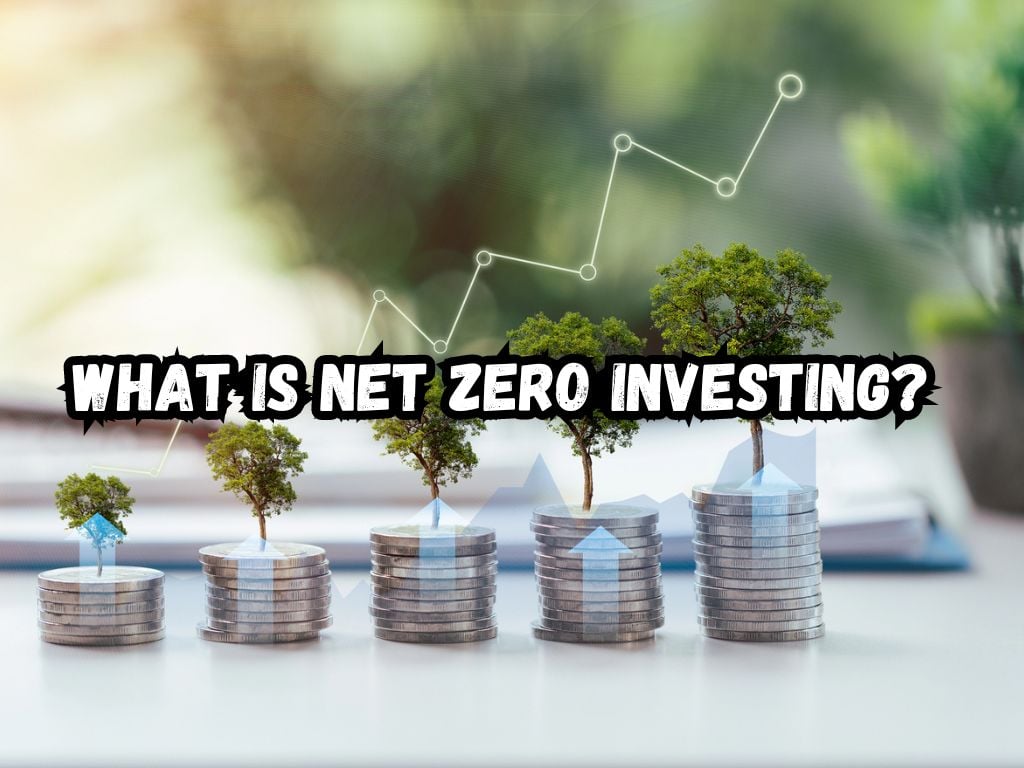In recent years, the urgent call to combat climate change has echoed around the globe. This reality has shifted the focus toward sustainable and green investments.
At the heart of this movement is net zero investing, a concept that seeks to balance the carbon emitted with the amount removed from the atmosphere.
This article delves into what net zero investing entails and its crucial role in achieving global environmental goals.
What Is Net Zero Investing?
The term ‘Net Zero’ refers to achieving a balance between the quantities of greenhouse gases emitted and the amounts removed from the atmosphere. Essentially, it aims for a neutral impact on climate.
The Paris Agreement, a landmark in the global battle against climate change, serves as a catalyst for net zero targets, urging countries and businesses to minimize their carbon footprint.
Net zero goals signify a commitment to an eco-friendlier planet by decreasing carbon emissions through various strategies, including clean energy adoption and carbon capture technologies.

The Role of Investing in Achieving Net Zero
Investing can significantly influence the shift to a greener economy. Net zero investing plays a unique role. It goes beyond merely avoiding harmful emissions to actively participating in reducing atmospheric carbon.
Whether through direct funding of renewable energy projects or investments in carbon offset initiatives, financial contributions are pivotal in promoting sustainable development.
Types of Net Zero Investments
Several investment avenues are available for those interested in contributing to net zero goals:
- Renewable Energy Projects: Investments in renewable resources such as solar and wind energy can reduce reliance on fossil fuels, thus decreasing carbon emissions.
- Carbon Offset Initiatives: Funding projects like reforestation efforts help absorb carbon dioxide from the atmosphere, counteracting emissions generated elsewhere.
- Green Bonds: These bonds are designed to raise funds for projects with environmental benefits, providing a financial instrument aligned with net zero goals.
- Sustainable and Responsible Companies: Investing in companies that prioritize environmental, social, and governance (ESG) practices supports a shift toward sustainability.
Assessing Net Zero Investment Opportunities
When evaluating net zero investment opportunities, consider their environmental impact, potential returns, and risks.
It’s crucial to perform due diligence to sift through claims and identify genuine contributions to carbon reduction.
This analytical approach helps investors avoid “greenwashing” — a practice where companies falsely claim to be environmentally friendly.
Measuring the Impact of Net BetaZero Investments
Tools like carbon footprint calculators aid investors in estimating the environmental impact of their investments.
Transparency and regular reporting are essential features of genuine net zero investments, providing evidence of their contribution to carbon reduction.
Challenges and Controversies in Net Zero Investing
Net zero investing faces several challenges, including market volatility and the risk of regulatory changes. Additionally, the potential for greenwashing poses a significant concern.
Investors can navigate these challenges by staying informed and conducting thorough research before making investment decisions.

Pro Tips for Net Zero Investing
- Goal Clarification: Begin with a clear understanding of your investment objectives and how much risk you’re willing to accept.
- Avoid Scams: Be vigilant in researching investments to ensure they sincerely contribute to net zero goals and are not merely greenwashing attempts.
- Diversification: Spreading investments across various sectors and types of net zero opportunities can mitigate risks.
- Stay Updated: Keeping abreast of the latest developments in climate science and renewable technologies can provide insightful perspectives for making informed decisions.
Frequently Asked Questions
What makes an investment truly “net zero”?
A truly net zero investment either directly reduces greenhouse gas emissions or contributes to their removal from the atmosphere, aiming for a net impact of zero emissions.
How do I start with net zero investing?
Start by defining your investment goals, understanding your risk tolerance, and researching investments that offer genuine contributions to carbon reduction.
Are net zero investments profitable?
Like all investments, net zero investments come with their risks and opportunities. Many have shown competitive returns, especially as global interest in sustainability grows.
How can individual investors contribute to achieving global net zero targets?
Investors can contribute by funding renewable energy projects, purchasing green bonds, or investing in companies with robust ESG practices.
What are the risks involved in net zero investing?
Risks include market volatility, potential regulatory changes, and the risk of investing in companies that engage in greenwashing.
Conclusion
The path to a net-zero future is challenging yet essential for our planet’s health. Net zero investing offers a proactive way for individuals and institutions to contribute towards achieving global climate goals.
By understanding what net zero investing is and how it works, investors can make informed decisions that align with their financial goals and environmental values.
Net zero investing is not just about securing financial returns but also about investing in our planet’s future.


 Tags:
Tags:










